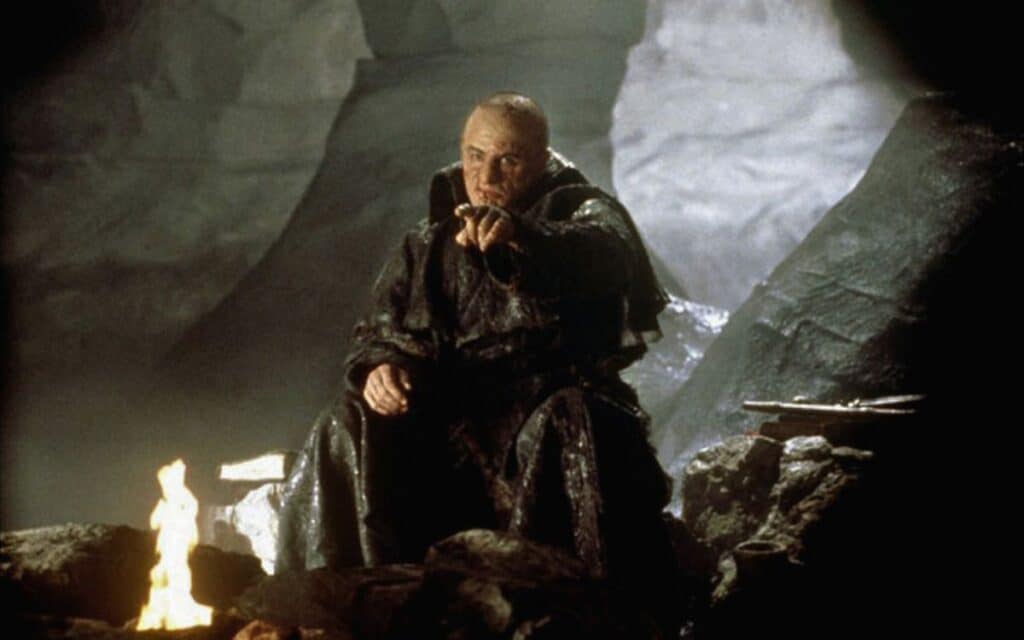Kenneth Branagh’s 1994 adaptation of Mary Shelley’s Frankenstein is a grand, blood-soaked affair that aims high but often falls flat, writes DAVID SAUNDERSON

TITLE: Mary Shelley’s Frankenstein
RELEASED: 1994
DIRECTOR: Kenneth Branagh
CAST: Kenneth Branagh, Robert De Niro, Helena Bonham Carter
Review of Mary Shelley’s Frankenstein 1994
In 1994, Kenneth Branagh set out to bring Mary Shelley’s original vision of Frankenstein to life, with a lavish production that boasted an A-list cast and a healthy dose of 19th-century Gothic horror.
The film, famously marketed as Mary Shelley’s Frankenstein (following Bram Stoker’s Dracula), promised a faithful adaptation, delivering on the gore and grandiose visuals, but unfortunately falls short of becoming the definitive version it hopes to be.
The story sticks closely to Shelley’s novel. Victor Frankenstein (Branagh) is a passionate scientist obsessed with conquering death.
In his relentless pursuit, he creates a living being from the parts of the deceased, played with haunting intensity by Robert De Niro.
But this creation is no simple monster. He’s a tortured soul, trapped between life and death, humanity and monstrosity.
Branagh’s film spares no expense in its effort to capture the essence of the Gothic.
The settings are dark, atmospheric, and drenched in the brooding menace of Victorian-era Europe.
From icy Arctic landscapes to spooky laboratories, the film’s visuals are undoubtedly striking.
Yet, for all its faithfulness, the film struggles with pacing and tone. It teeters between operatic melodrama and genuine horror.
The emotional core of the story – the tragic relationship between creator and creation – often gets lost amidst the spectacle.
De Niro delivers a compelling performance, portraying the Creature with a mix of pathos and menace. But the film fails to delve deep enough into his existential anguish, a key element in Shelley’s work.
The cast, while impressive on paper, doesn’t always hit the mark. Branagh himself, as Victor, exudes the right amount of manic energy but sometimes comes off as more theatrical than sincere.
Helena Bonham Carter as Elizabeth, Victor’s doomed love, brings her usual charm, but her character is underwritten, reduced to a mere pawn in Victor’s tragic tale.
The film’s gore is noteworthy, with several scenes pushing the envelope for its time, aligning it more with modern horror sensibilities than the Gothic romances of yore.
The practical effects and makeup, especially in De Niro’s transformation into the Creature, are commendable.
Despite its best efforts, Mary Shelley’s Frankenstein feels uneven, a film caught between reverence for its source material and the demands of 1990s cinema.
It’s a bold attempt to return to Shelley’s text, certainly more faithful than earlier adaptations, but it lacks the emotional depth and narrative focus needed to elevate it beyond a mere nice try.
For horror aficionados and fans of the novel, there’s enough here to appreciate, especially in its darker, more grotesque moments.
But for others, it may feel like a missed opportunity, a film that gets so much right on the surface but doesn’t quite capture the haunting spirit of Shelley’s tale.
Tell us your thoughts about Mary Shelley’s Frankenstein 1994 in the comments section below!







